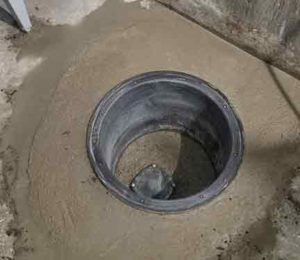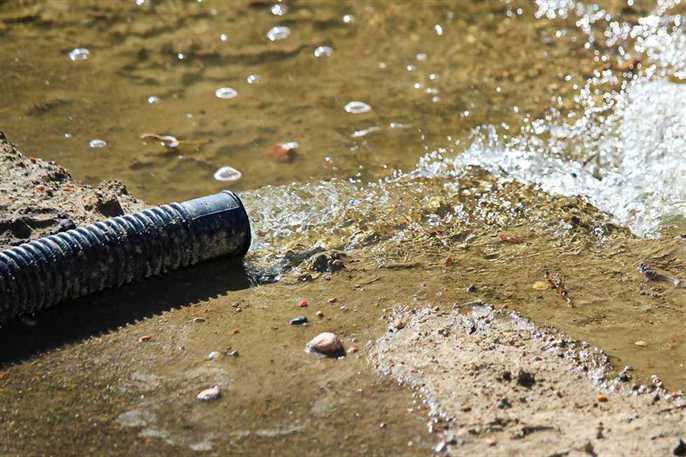We have come across this great article involving Steps to Cleaning Your Sump Pump Properly directly below on the internet and concluded it made sense to write about it with you over here.

Sump pumps are important components in several homes, especially in locations vulnerable to flooding or extreme dampness. They assist stop water damage by efficiently removing excess water from cellars or crawl spaces. Nonetheless, like any other home appliance, sump pumps call for normal upkeep to guarantee they work successfully when required one of the most. Cleaning your sump pump is a crucial part of its maintenance, and recognizing just how to do it properly can save you from costly repairs and possible calamities.
Intro
Preserving a clean sump pump is vital for its correct performance and durability. Neglecting this essential job can cause clogs, breakdowns, and eventually, water damage to your residential or commercial property. Therefore, finding out how to cleanse a sump pump is important for homeowners who rely upon these gadgets to maintain their basements dry and safeguarded.
Signs of a Dirty Sump Pump
Understanding when your sump pump requires cleaning is important for preventing prospective breakdowns. Some usual signs that indicate a filthy sump pump consist of weird sounds during operation, decreased water flow, and noticeable particles in the pit. If you observe any one of these signs and symptoms, it's important to clean your sump pump immediately to prevent any type of further issues.
Preparing for Cleansing
Prior to you start cleaning your sump pump, it's necessary to take some safety preventative measures. Beginning by turning off the power to the pump to avoid any kind of electric mishaps. Additionally, put on suitable protective equipment, such as gloves and safety glasses, to secure on your own from dirt, debris, and prospective pathogens.
Recognizing the Sump Pump
Before diving into the cleaning procedure, it's vital to have a fundamental understanding of how a sump pump functions. Usually set up in a pit or basin listed below the basement flooring, a sump pump includes a number of essential parts, including a pump, a float button, and a discharge pipeline. When water collects in the pit, the float button triggers the pump, which after that pumps the water out via the discharge pipe, away from the structure's foundation.
Detailed Guide to Cleaning a Sump Pump
Shutting down the Power
Begin by disconnecting the power supply to the sump pump to stop any type of crashes while cleaning.
Looking For Correct Functioning
Prior to reinstalling the pump, carry out a fast examination to guarantee that the float button activates the pump properly. Put some water into the sump pit and observe the pump's operation. If every little thing is functioning correctly, you can reconstruct the pump and reconnect the power supply.
Eliminating Debris and Dirt
Utilize a container or a scoop to get rid of any kind of noticeable particles, dirt, or sediment from the sump pit. Dispose of the debris correctly to prevent it from clogging the pump or the discharge pipe.
Cleaning the Pump and Drift Switch Over
As soon as the pit is clear of debris, carefully get rid of the pump from the pit. Evaluate the pump and the float button for any type of indicators of damages or wear. Use a soft brush or fabric to cleanse the surface areas and eliminate any collected crud.
Flushing the System
After cleaning the pump and float switch, purge the sump pit with tidy water to remove any staying dirt or debris. This will certainly help make sure that the pump operates efficiently and efficiently.
Maintenance Tips to Maintain Your Sump Pump Clean
Along with regular cleansing, there are a number of upkeep ideas you can follow to maintain your sump pump in ideal condition:
Conclusion
Cleansing your sump pump is an essential aspect of its maintenance and guarantees that it operates efficiently when you require it one of the most. By following the actions outlined in this overview and integrating normal upkeep into your routine, you can extend the life-span of your sump pump and safeguard your home from water damages.
6 STEPS ON HOW TO CLEAN A SUMP PUMP PROPERLY
UNDERSTANDING SUMP PUMPS
Your sump pump plays a crucial role in protecting your home by managing and removing excess water. It primarily functions as a “shield”, guarding your basement against the damaging effects of water accumulation. The pump is housed in a sump pit in the lowest part of your basement, and its job is to pump out any water that collects there.
During heavy rainfalls or when snow melts rapidly, water can infiltrate your basement, posing potential risks like flooding, structural damage, and harmful mold growth. Here, the sump pump springs into action, pumping out the intruding water and directing it away from your home.
SAFETY FIRST
Before cleaning, remember to prioritize safety. Disconnect the sump pump from the power source to prevent any accidental electric shocks. Also, wear sturdy gloves to protect your hands from any sharp or dirty components within the pump.
REMOVE THE SUMP PUMP
After ensuring your safety, the next step is to remove the sump pump from its pit. Doing this might require careful maneuvering as you don’t want to damage any pump components. Once removed, clean the sump pit to remove any accumulated debris or sludge.
INSPECT THE PUMP
Inspect the pump for any visible signs of wear or damage. Check the power cord, float switch, and impeller housing. If any components look worn out or damaged, consider replacing them to ensure optimal performance.
CLEAN THE PUMP
Thoroughly clean the pump with warm, soapy water. Make sure to rid it of any dirt, gravel, or other debris that might impede its performance. You can use a toothbrush to clean the small, hard-to-reach parts of the pump.
REINSTALL THE SUMP PUMP
Reinstall the pump into the sump pit Make sure it’s positioned correctly to remove the water effectively Once it’s back in place, reconnect it to the power source TEST THE PUMP
Finally, pour some water into the pit to ensure the pump works correctly. It should start automatically and begin pumping out the water; if it doesn’t, check the power source and the positioning of the pump.
Remember, while cleaning your sump pump is an essential part of home maintenance, hiring a professional plumber for a thorough inspection and cleaning at least once a year is also important. This will ensure that your pump is in optimal condition, ready to protect your home from potential water damage.
BEST PRACTICES FOR CLEANING SUMP PUMP DISCHARGE PIPES
Regular Inspection: Regularly inspect your discharge pipes, especially during heavy rainfall or snowmelt periods. Look for any signs of blockage or damage. Early detection of problems can prevent serious issues down the line. Periodic Cleaning: Over time, sediment and debris can accumulate in the discharge pipes, impeding the flow of water. Regular cleaning helps keep the pipes clear and functioning efficiently. You can use a high-pressure water jet to effectively clean the pipes. Insulation During Winter: In colder climates, discharge pipes can freeze, blocking the outflow of water. Protect your discharge pipes from freezing temperatures by insulating them with foam pipe insulation. This will ensure the sump pump can continue to discharge water even in freezing conditions. Proper Positioning: The discharge pipe should be positioned to direct water away from your home’s foundation. Improper positioning can lead to water seeping back into the basement. Ensure the pipe is long enough and angled correctly. Installation of a Check Valve: A check valve prevents water from flowing back into your sump pit after the pump has pushed it out. Installing a check valve helps maintain the efficiency of your sump pump and reduces the risk of flooding. Minimize Pipe Turns: Every curve or turn in the discharge pipe can decrease the efficiency of water flow. By minimizing turns and bends in your discharge pipe, you can increase the efficiency of your sump pump. https://www.fullspeedplumbing.com/how-to-clean-a-sump-pump-properly9999/

Do you appreciate more info about Steps to Cleaning Your Sump Pump Properly? Leave a short review further down. We will be glad to know your insights about this write up. We hope that you come back again in the future. You should pause to distribute this blog entry if you enjoyed it. I love your readership.
Schedule A Service Call